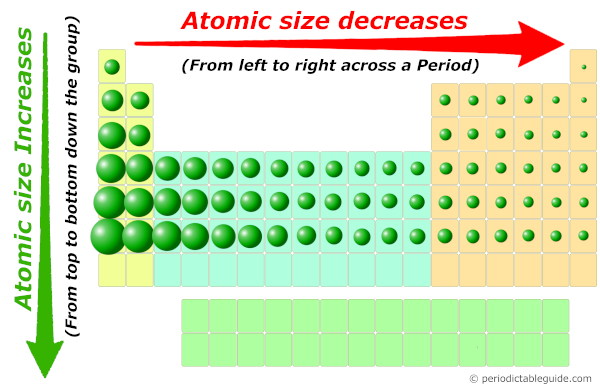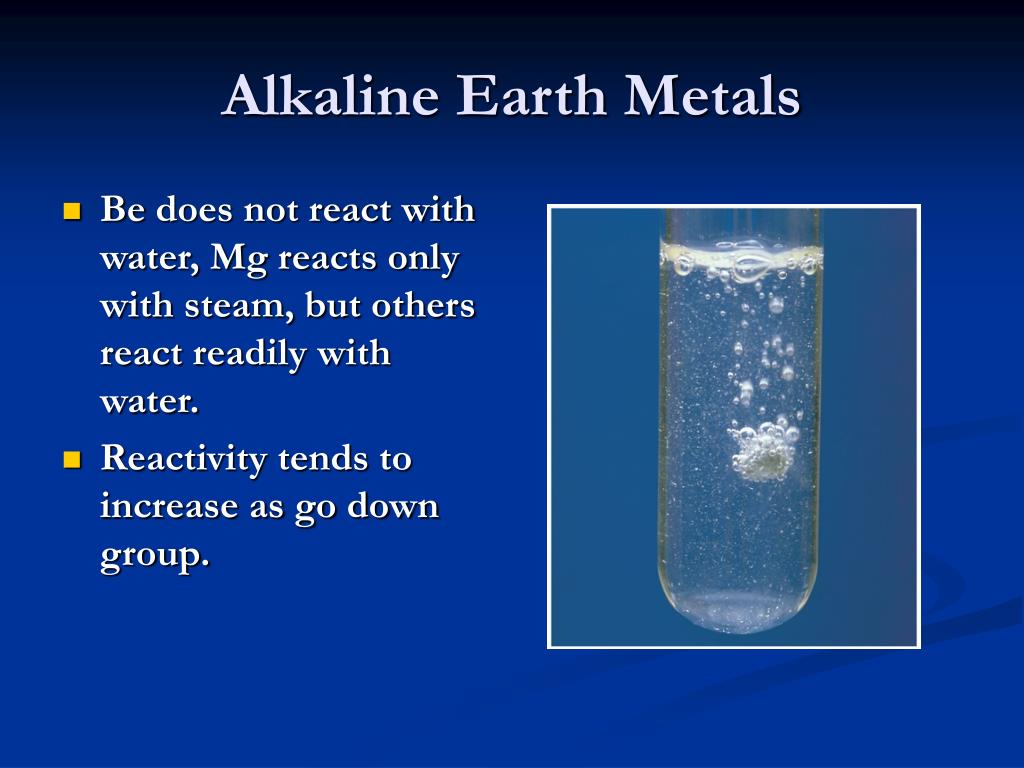

Metalloids (metal-like) have properties of both metals and non-metals. Mixtures bubble and boil, fizz and hiss and may even smoke and burn. The reactions of alkali metals with water are pretty spectacular chemical reactions. This trend map aids selection of the appropriate reactive synthon depending on the reactivity sought.Īlpha-borylcarbanion borata density functional calculations descriptors. The most reactive nonmetal on the periodic table is fluorine. Introduction Elements are classified based on similarities, differences and trends in their properties, including their chemical reactions. Furthermore, it was possible to classify the α-boryl alkylidene metal precursors into three classes directly related to their reactivity: 1) nucleophilic borata-alkene salts with alkali and alkaline earth metals, 2) nucleophilic η 2 -(C-B) borata-alkene complexes with early transition metals, Cu and Ag, and 3) α-boryl alkyl complexes with late transition metals.
#Reactivity trend of alkali earth metals free#
In general, the free carbanionic intermediates are described as borata-alkene species with C-B π interactions polarized towards the carbon. This study maps the reactivity space by systematically varying the nature of the boryl moiety, the substituents of the carbanionic center, the number of α-boryl motifs, and the metal counterion. DFT-derived parameters were used to capture their electronic and steric properties, computational reactivity towards model substrates, and crystallographic analysis within the Cambridge Structural Dataset. Here, the electronic structure and the reactivity trends of a large dataset of α-boryl carbanions are described. 1.6.9 demonstrate knowledge and understanding that the alkali metals have low density and the first three are less dense than water 1.6.

The electron-deficient, trivalent boron center stabilizes the carbanion facilitating its generation and tuning its reactivity. Let us look at the different aspects of reactivity of alkaline earth metals: Reactivity with water and air Because of the creation of an oxide coating on their surfaces, beryllium and magnesium are unresponsive to oxygen and water, so they do not react at all. The chemistry of stabilized α-boryl carbanions shows remarkable diversity, and can enable many different synthetic routes towards efficient C-C bond formation.


 0 kommentar(er)
0 kommentar(er)
